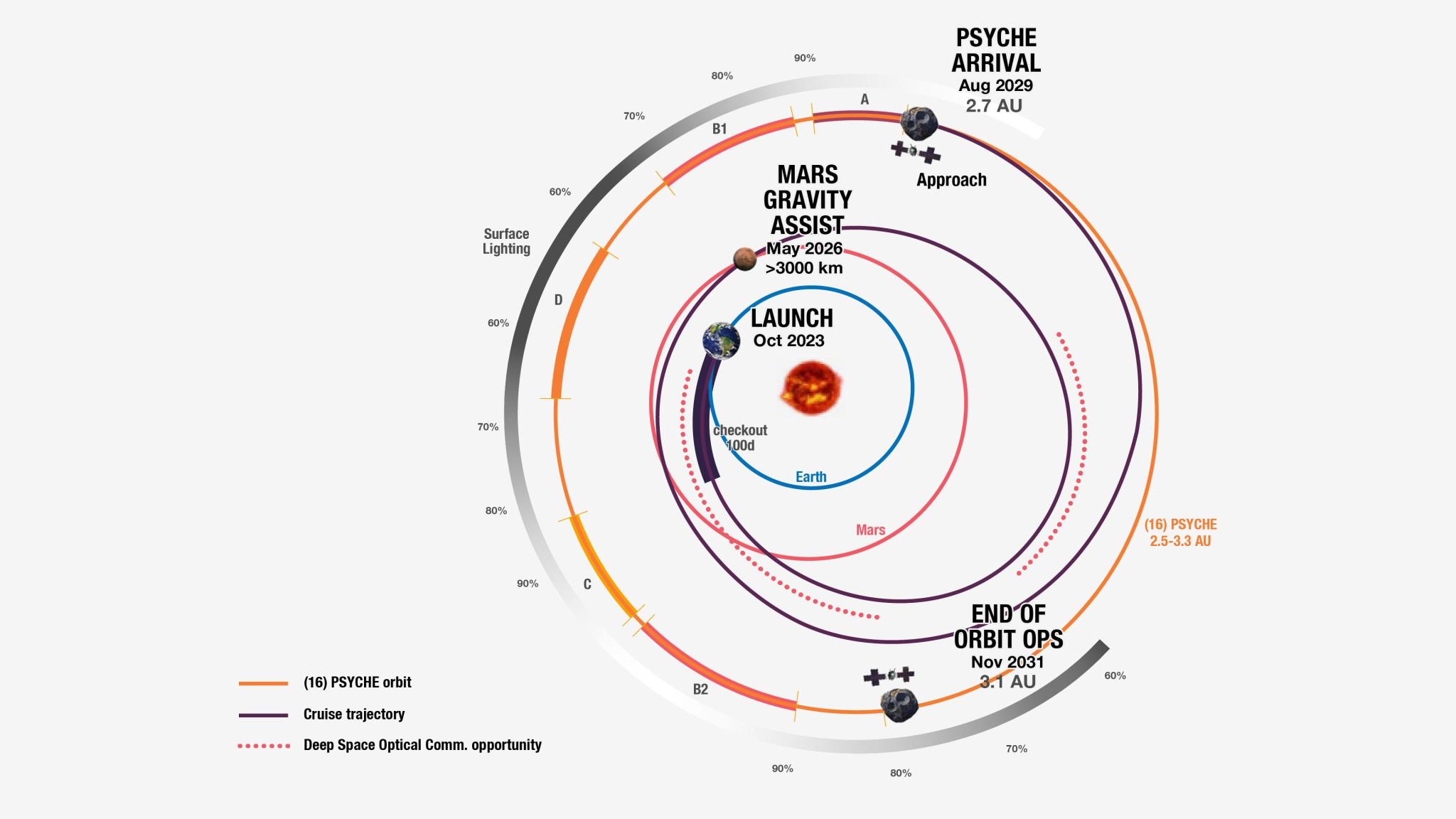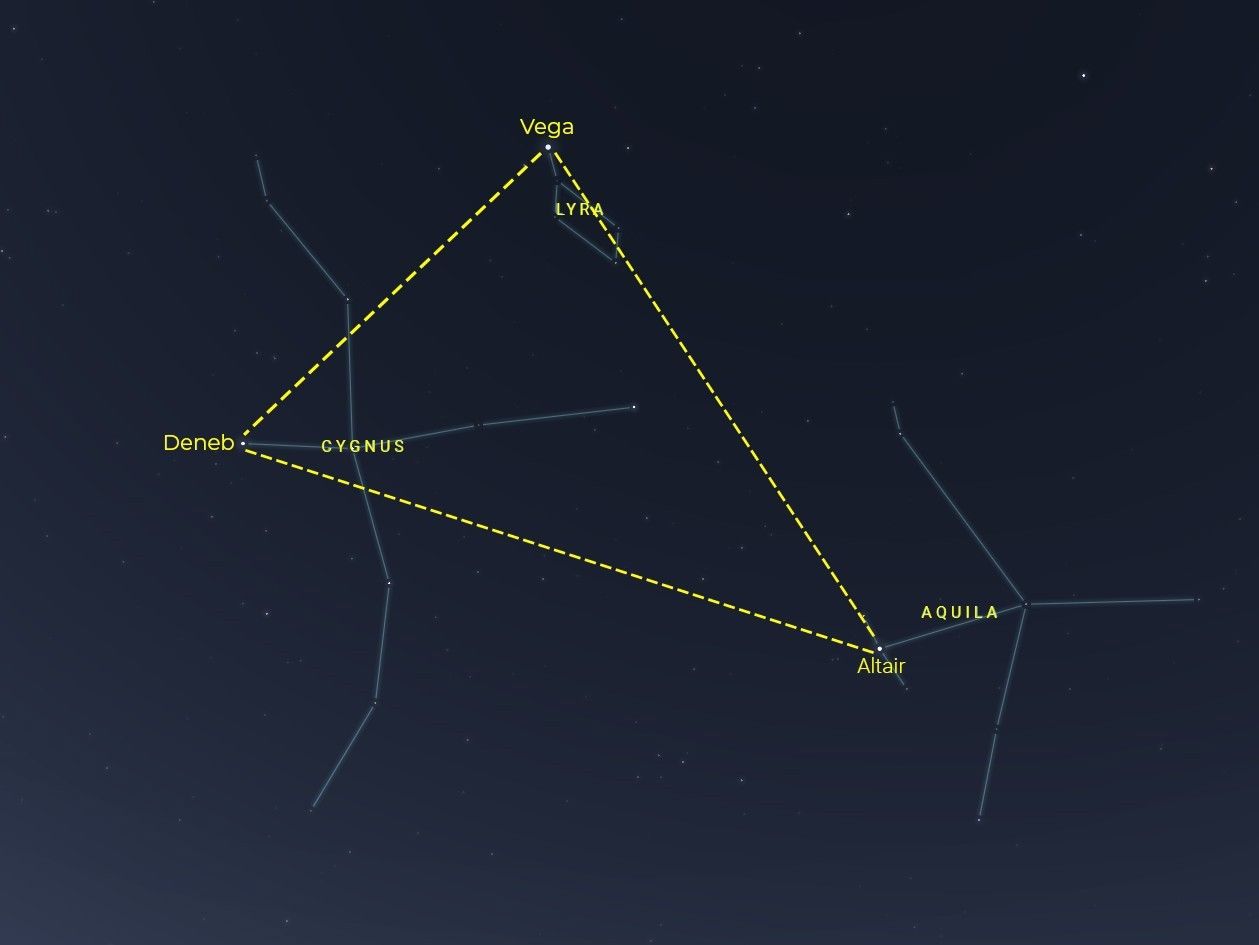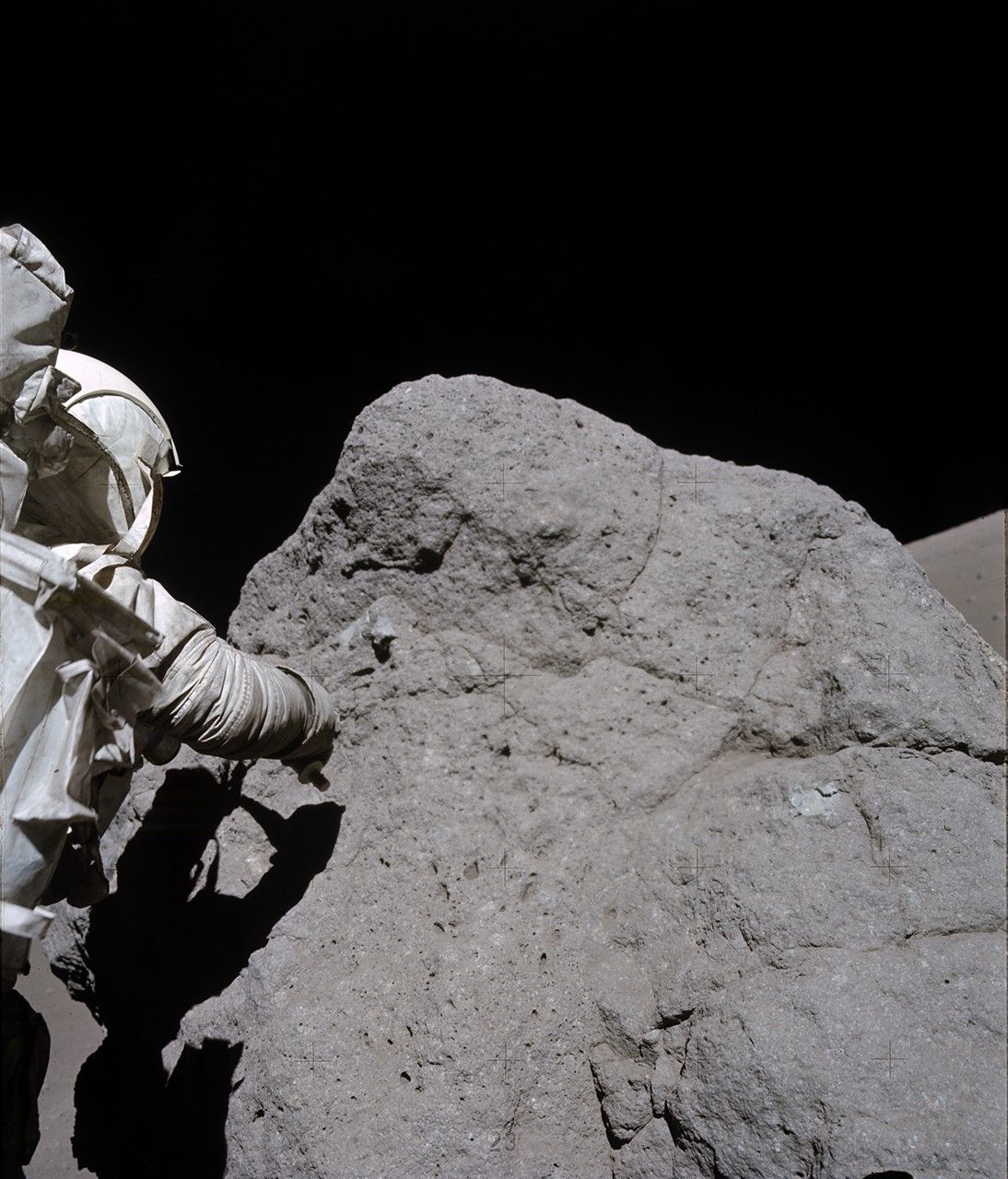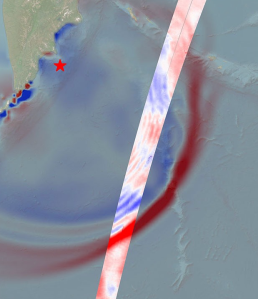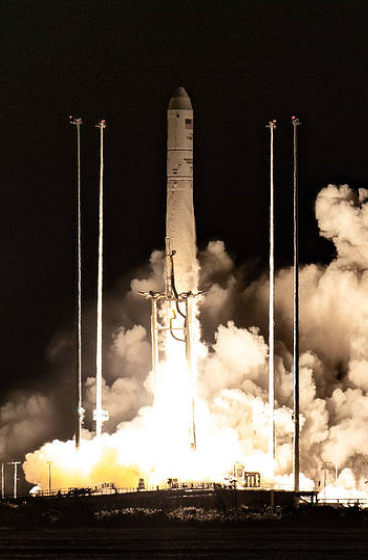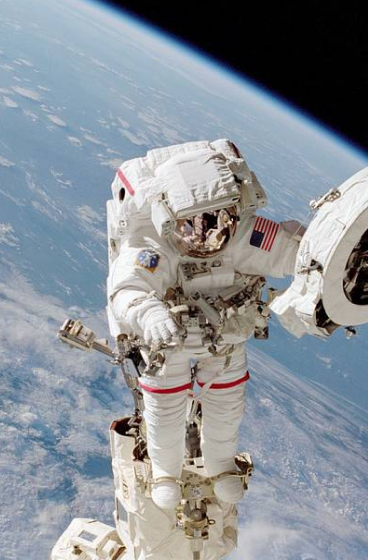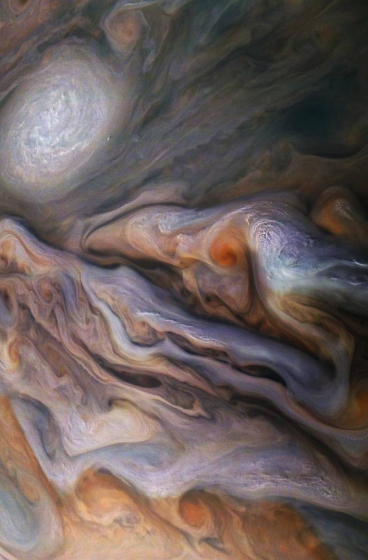4 min read
Preparations for Next Moonwalk Simulations Underway (and Underwater)

Headed for a metal-rich asteroid of the same name, the Psyche spacecraft successfully calibrated its cameras by looking homeward.
On schedule for its 2029 arrival at the asteroid Psyche, NASA’s Psyche spacecraft recently looked back toward home and captured images of Earth and our Moon from about 180 million miles (290 million kilometers) away. The images were obtained during one of the mission team’s periodic checkouts of the spacecraft’s science instruments.
On July 20 and July 23, the spacecraft’s twin cameras captured multiple long-exposure (up to 10-second) pictures of the two bodies, which appear as dots sparkling with reflected sunlight amid a starfield in the constellation Aries.
The Psyche multispectral imager instrument comprises a pair of identical cameras equipped with filters and telescopic lenses to photograph the asteroid Psyche’s surface in different wavelengths of light. The color and shape of a planetary body’s spectrum can reveal details about what it’s made of. The Moon and the giant asteroid Vesta, for example, have similar kinds of “bumps and wiggles” in their spectra that scientists could potentially also detect at Psyche. Members of the mission’s science team are interested in Psyche because it will help them better understand the formation of rocky planets with metallic cores, including Earth.
When choosing targets for the imager testing and calibration, scientists look for bodies that shine with reflected sunlight, just as the asteroid Psyche does. They also look at objects that have a spectrum they’re familiar with, so they can compare previous telescopic or spacecraft data from those objects with what Psyche’s instruments observe. Earlier this year, Psyche turned its lenses toward Jupiter and Mars for calibration — each has a spectrum more reddish than the bluer tones of Earth. That checkout also proved a success.
To determine whether the imager’s performance is changing, scientists also compare data from the different tests. That way, when the spacecraft slips into orbit around Psyche, scientists can be sure that the instrument behaves as expected.
“After this, we may look at Saturn or Vesta to help us continue to test the imagers,” said Jim Bell, the Psyche imager instrument lead at Arizona State University in Tempe. “We’re sort of collecting solar system ‘trading cards’ from these different bodies and running them through our calibration pipeline to make sure we’re getting the right answers.”
Strong and Sturdy
The imager wasn’t the only instrument that got a successful checkout in late July: The mission team also put the spacecraft’s magnetometer and the gamma-ray and neutron spectrometer through a gamut of tests — something they do every six months.
“We are up and running, and everything is working well,” said Bob Mase, the mission’s project manager at NASA’s Jet Propulsion Laboratory in Southern California. “We’re on target to fly by Mars in May 2026, and we are accomplishing all of our planned activities for cruise.”
That flyby is the spacecraft’s next big milestone, when it will use the Red Planet’s gravity as a slingshot to help the spacecraft get to the asteroid Psyche. That will mark Psyche’s first of two planned loops around the solar system and 1 billion miles (1.6 billion kilometers) since launching from NASA’s Kennedy Space Center in October 2023.
More About Psyche
The Psyche mission is led by ASU. Lindy Elkins-Tanton of the University of California, Berkeley is the principal investigator.A division of Caltech in Pasadena, JPL is responsible for the mission’s overall management, system engineering, integration and test, and mission operations. Maxar Technologies in Palo Alto, California, provided the high-power solar electric propulsion spacecraft chassis. ASU leads the operations of the imager instrument, working in collaboration with Malin Space Science Systems in San Diego on the design, fabrication, and testing of the cameras.
Psyche is the 14th mission selected as part of NASA’s Discovery Program, managed by the agency’s Marshall Space Flight Center in Huntsville, Alabama. NASA’s Launch Services Program, based at Kennedy, managed the launch service.
For more information about NASA’s Psyche mission go to:
http://www.science.nasa.gov/mission/psyche
News Media Contacts
Gretchen McCartney
Jet Propulsion Laboratory, Pasadena, Calif.
818-287-4115
gretchen.p.mccartney@jpl.nasa.gov
Karen Fox / Molly Wasser
NASA Headquarters, Washington
202-358-1600
karen.c.fox@nasa.gov / molly.l.wasser@nasa.gov
2025-106
